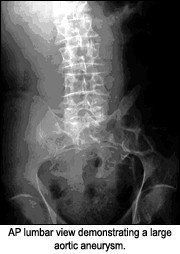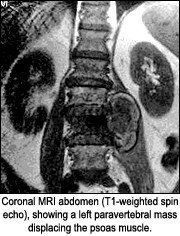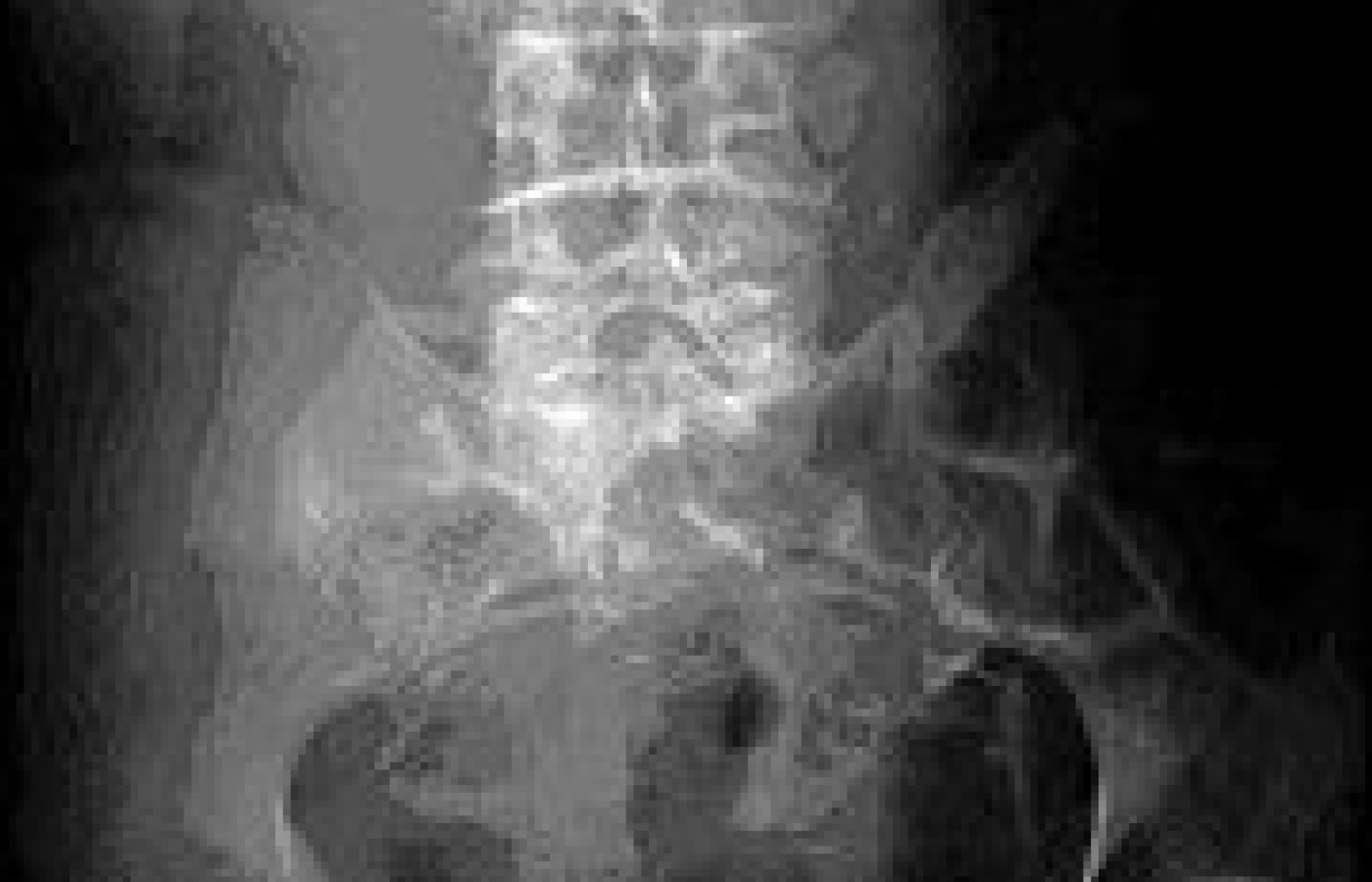Some doctors thrive in a personality-based clinic and have a loyal following no matter what services or equipment they offer, but for most chiropractic offices who are trying to grow and expand, new equipment purchases help us stay relevant and continue to service our client base in the best, most up-to-date manner possible. So, regarding equipment purchasing: should you lease, get a bank loan, or pay cash?
Symptoms of Lower Back Pain May Be a Medical Emergency
This AP lumbar view is of a 75-year old male with symptoms of lower back pain for several weeks. History is unremarkable, except that he was a smoker, but quit some 20 years ago. He has had back pain in the past, which resolved with treatment and rest. His present symptoms just are not resolving, and he hasn't experienced any relief from previous remedies that helped him in the past. Would you have taken the lumbar films before treating him? I think if you took the films you would be very concerned about the obvious aneurysm, which is nicely outlined by the atherosclerotic calcific plaquing.

Men over 60 have a higher incidence of aneurysms - about 10 percent. In men that smoke or have a history of smoking, the statistics seem to double, depending on the clinical study. Ninety percent of aortic aneurysms occur in the abdominal region.
A tear in the inner wall of the aorta generally occurs near the aneurysm. Blood then goes through the torn area, dissecting the wall and creating a new channel. The tear and creation of that new channel can be contained within the outer wall and a hematoma will develop, but often, as one might expect, this is not a stable situation. Often the tear will go through the outer wall.

Acute rupture of an abdominal aortic aneurysm is a surgical emergency with an operative mortality rate as high as 60 percent. A chronic contained leak of an abdominal aneurysm also can occur. The expected clinical presentation may then be delayed for up to several months.1
Most patients complain of some back or abdominal pain, but pain may be completely absent.2 There are reported cases in the literature of chronic aortic rupture masquerading as a psoas abscess, renal colic, obstructive jaundice due to compression of the common bile duct, and as a groin hernia.3 The reason for these pain patterns is due to the pressure from the formation of a hematoma, which often presses against the psoas muscle, and the fibers of the femoral nerve that pass around the psoas muscle.
References
- Jones CS, Reilly MK, Dalsing MC, et al. Chronic contained rupture of abdominal aneurysms. Arch Surg 1986;121:542-6.
- Larsson EM, Heiling M, Holtas S. Aortic pathology revealed by MRI in patients with clinical suspicion of spinal disease. Neuroradiology 1993;35:499-502.
- Rosenthal D, Clark MD, Stanton PE, et al. Chronic contained rupture of abdominal aortic aneurysm. Is it real? J Cardiovasc Surg 1986;27:723-4.
Deborah Pate, DC, DACBR
San Diego, California
patedacbr@cox.net



